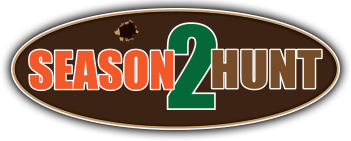One of the places I whitetail deer hunt are the hills and valleys of western Wisconsin. Often, hard to climb ridges make excellent deer stand locations, watching the trails and saddles running across the ridge below. My spring turkey hunts are usually in central Wisconsin but the fall hunt brings me to the ridge and bluff country in the western part of the state. Turkeys love to roost in the thick trees near the top of these ridges, flying off to the fields or open areas to feed in the morning. Climbing to the top of the ridges and listening for gobbling below is an effective way to locate Toms in the valleys. Often the backside of these ridges especially on public grounds hold turkeys and gobbling cannot be heard by hunters calling from the road during the preseason. Just like hunting whitetails on public grounds you need to find out of the way areas away from the crowds. Using a topographic map is an excellent way to identify ridges and valleys and mark the roads and public parking areas allowing you to find areas off the beaten path. If the Toms seem to always be on the private land off the public boundary, find pinch points where they might move through, set up a decoy and wait. Often hens will leave their gobblers mid morning to lay an egg. These solitary gobblers can then be called in especially to a hen decoy. Later in the season resist the desire to call too much. Turkeys that have survived are like waterfowl after opening day. Its better to call too little than too much. Like all hunting, locating turkeys along ridges and valleys requires scouting and the best way is to climb to the top and listen. Whitetails use trails to move and often turkeys will also. Locate the birds and make your plan on where you’re going to set up. Using a topographic map can make it much easier.
